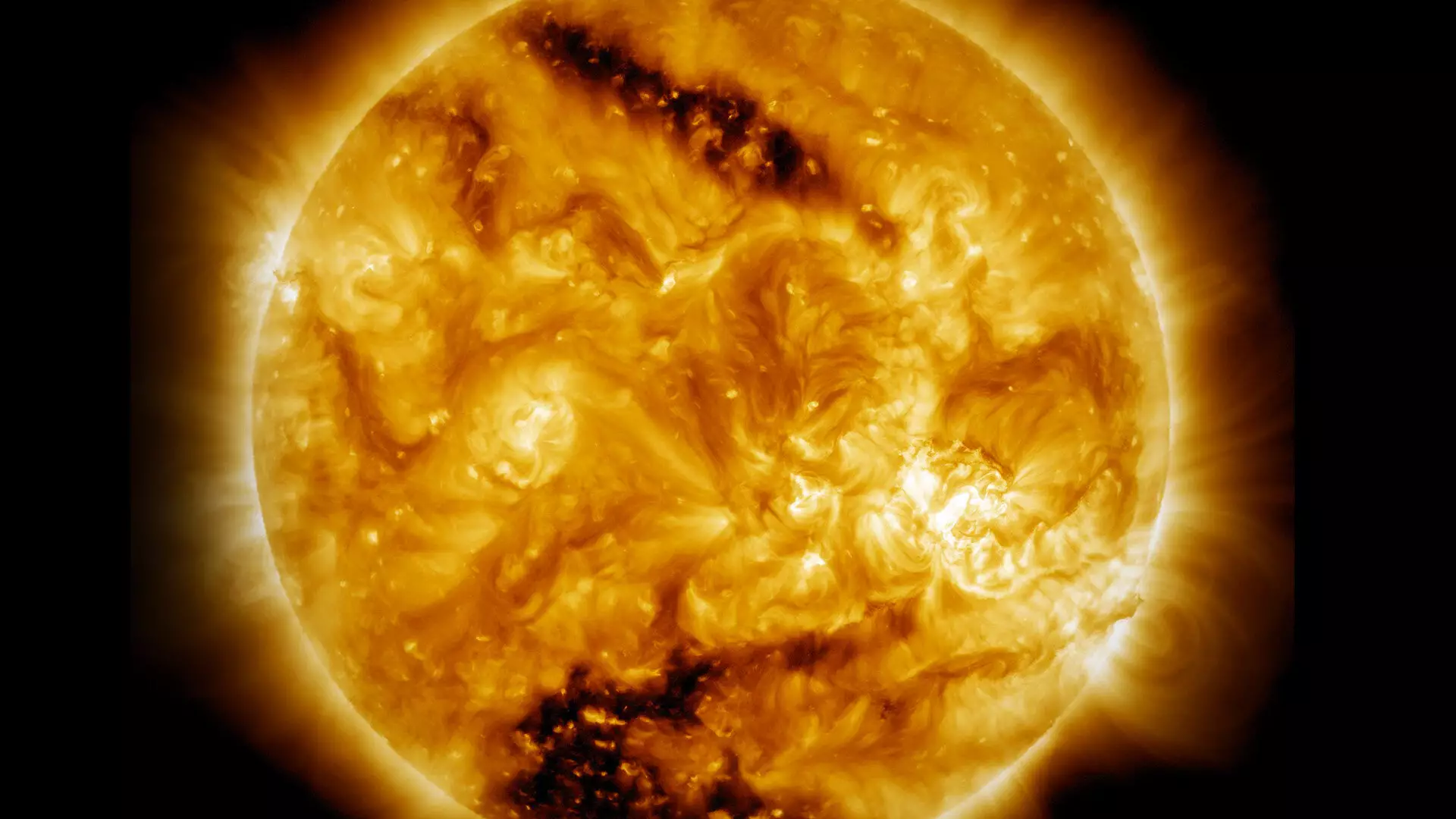The sun, a colossal ball of plasma that lies at the center of our solar system, continues to mystify scientists with its complex behavior. One of the most perplexing aspects of the sun is the apparent contradiction in temperature between its surface and its outer atmosphere, the solar corona. The sun’s surface, measured at approximately 10,000 degrees Fahrenheit, stands in stark contrast to the outer corona, which reaches staggering temperatures of around 2 million degrees Fahrenheit. This phenomenon, where the outer layer of the sun is significantly hotter than its surface, raises a fundamental question in astrophysics: what processes elevate the temperature of the corona to such extreme levels?
Since the initial discovery of this temperature anomaly in 1939, scientists have sought answers, exploring various potential explanations. Yet, despite decades of research, the underlying mechanism remains elusive, prompting renewed interest and research efforts into this solar conundrum.
Recent Breakthroughs in Coronal Heating Research
Significant progress has recently been made by a research team led by Sayak Bose from the U.S. Department of Energy’s Princeton Plasma Physics Laboratory. Their work has illuminated the potential role that reflected plasma waves, specifically Alfvén waves, might play in the heating of coronal holes—regions of the solar corona characterized by low density and open magnetic field lines. The implications of their findings, published in *The Astrophysical Journal*, represent a remarkable leap towards deciphering one of our sun’s enduring mysteries.
As articulated by Bose, scientists have long understood that coronal holes possess high temperatures; however, the mechanisms responsible for this heating have remained largely uncharted territory. The team’s research suggests that the reflection of plasma waves could significantly contribute to this heat generation. This discovery marks a pivotal step forward in bridging theoretical predictions and experimental validation.
Understanding Alfvén Waves
At the heart of this study are the enigmatic Alfvén waves, first proposed by the prominent Swedish physicist Hannes Alfvén, who was awarded the Nobel Prize for his work. These waves, reminiscent of the vibrations produced by plucked guitar strings, are generated by fluctuations within magnetic fields in plasma. When these waves propagate through mediums with varying densities and magnetic field strengths—similar to those found in the solar corona—they can be reflected back towards their origin, creating turbulence as they collide with their outward-moving counterparts. This turbulence is theorized to be a critical component in the heating process of coronal holes.
The research team conducted rigorous experiments using the Large Plasma Device at UCLA, a 20-meter-long plasma column, to simulate conditions akin to those in coronal holes. Remarkably, the experiments confirmed the hypothesis that Alfvén waves could indeed reflect under relevant conditions, providing experimental validation for a concept that had heretofore been speculative.
In tandem with the laboratory experiments, the researchers carried out extensive computer simulations to further substantiate their findings. This dual approach allowed them to cross-verify their results and reinforced the notion that the phenomena observed in the laboratory closely mirror those occurring in the solar atmosphere. As Bose notes, the intersection of experimental physics and simulation plays a critical role in enhancing our comprehension of complex natural systems, such as the sun.
The contributions of additional collaborators from prestigious institutions, including Princeton University and Columbia University, underscore the significance of collaborative research in advancing our grasp of astrophysical phenomena. By leveraging various scientific disciplines, researchers can tackle multifaceted problems such as solar corona heating more effectively.
The latest advancements in understanding the heating of the solar corona serve not only to unravel this particular enigma but also to exemplify the power of interdisciplinary science in solving profound mysteries of the universe. As we deepen our comprehension of Alfvén waves and their role in solar dynamics, we draw closer to unveiling the secrets held by our nearest star. The ongoing quest to understand the sun stands as a testament to the curiosity driving scientific inquiry, perpetuating the age-old pursuit of knowledge in the cosmic arena. The additional insights gained from these findings may inspire further research and exploration, ultimately leading to a more nuanced understanding of the intricate workings of our solar system.


Leave a Reply